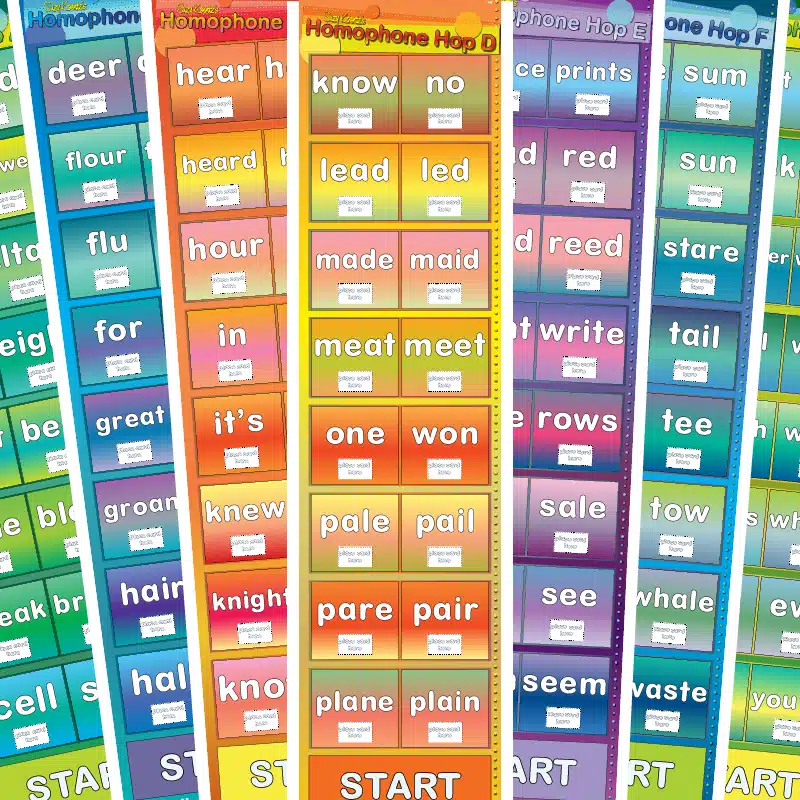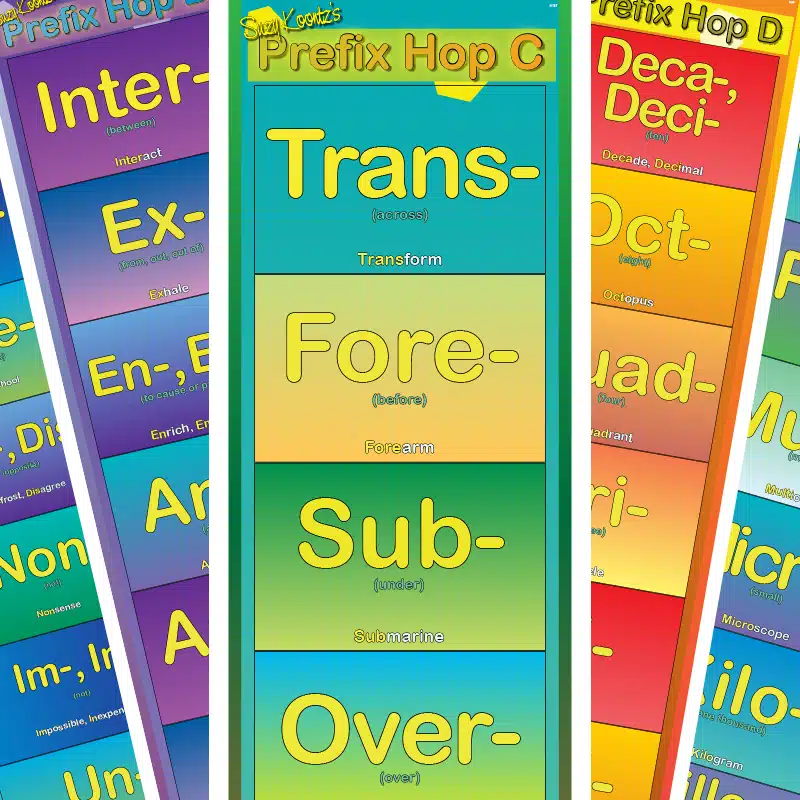Bean Bag Race

Have a student toss a bean bag onto the mat. The rest of the students try to land their own bean bags on a homophone to the original one. When someone succeeds they call out the group of homophones.

Have a student toss a bean bag onto the mat. The rest of the students try to land their own bean bags on a homophone to the original one. When someone succeeds they call out the group of homophones.

Have several students choose a homophone on the mat and stand on it. (One from each pair) Have the student closest to the start begin a story with a sentence or part of a sentence that includes the word they are on. Continue down the mat with each student contributing to the story.

Have a student toss a bean bag onto the mat. The rest of the students try to land their own bean bags on the homophone to the original one. When someone succeeds they call out the pair of homophones made.

Have students spell the new word they made with the prefix included.

Determine the meaning of the new word formed when a known prefix is added to a known word (e.g., happy/unhappy, tell/retell)
Give students a Y intercept and slope and have them write the equation it makes on cards and place on the mat.
Write several functions in Y Intercept form. Ask students what the Y intercept and slope are for each equation.
Write several quadratic equations on index cards and place on the f(x) box. Have students factor each and determine the two x values that solve the equation.
Write several functions on notecards and have students roll a dice to find a value of x and then have them evaluate each function based on that value. Function examples: x-4, x+3, (any from other activities here)
Place a function notecard at the top of the y=f(x) column. On different cards write various values for the x column that include x. Then have students replace x with the value on the notecard and simplify. Task Card Examples: f(x)=xsquared+5 find f(x+2) , f(x)-=3xsquared+2x-5, find f(m-squared), f(x)x-squared-8x find f(c+d)